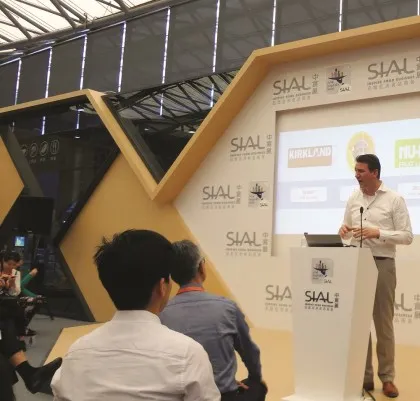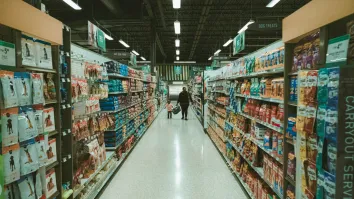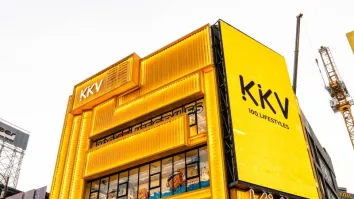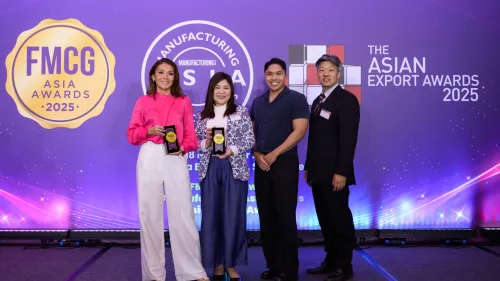
Supporting market trends in the growing F&B industry
SIAL China 2017 offered an immersive and international experience to exhibitors and professional visitors. Muneerah Bee shares a round-up of the event that leverages the food trade between Asia and the rest of world.
ASIA’S largest professional F&B exhibition SIAL China took place from May 17-19 in Shanghai, with an increase of 31% in the number of visiting professionals. Altogether, 3,200 exhibitors (a 10% increase from 2016) presented their latest products and food trends from 67 countries across the world, attracting 101,134 professionals.
Held at the Shanghai New International Expo Centre across 13 halls with 149,500sqm, SIAL China 2017 started with an opening ceremony in Hall E7 with the participation of country governments, embassies, overseas professional organisations, as well as relevant departments of China local governments, industry organisations and a delegation of ministers from Argentina, Australia, Czech Republic, Hungary, Lithuania, Russia and Uruguay.
As the Guest Country of Honour at SIAL China 2017, Argentina’s pavilions covered more than 1,200sqm in Halls E3 and E7. China is said to be the second largest export market for Argentine agricultural products. President of Argentina Mauricio Macri also visited the event on May 18.
Visitor Jieun Lee from South Korea was impressed with the quality of the trade show and the presentations.
“There are a lot of booths from all over the world such as India, China, Japan, France and more, and there is a wide variety of products such as chocolates and wine, which is quite interesting. I feel like Chinese people are more and more interested about this kind of food.”
She added that the China market can be hard to crack, especially in terms of distribution channels, marketing and branding. “We have to diversify products and see what our clients are
like when it comes to segmentation. So, there are lots of things to think about before launching products in China.”
Learning points
The sixth edition of the Retail & Hospitality Forum in Hall W1 was a big draw where visitors flocked to listen to insightful talks, presentations and analysis on topicas such as the transformation in the Internet era, food regulation compliance and importation, building a successful brand in China, trends of packaged food market and more. Experts from PwC, Euromonitor International, Marine Stewardship Council, Alibaba Group and XTC World Innovation were among the lineup of speakers.
Robbert Gorris, Sovereign China’s Business Development manager in Beijing, shared with the audience on how to succeed in the Chinese e-commerce landscape, highlighting three key growth drivers: demand readiness, technology infrastructure and support infrastructure. For instance, the development of retail space in some parts of China is lacking, especially in
second-, third-, fourth- and fifth-tier cities, therefore e-commerce is growing much faster there.
“For example, if a consumer wants to buy a bottle of French wine but he cannot find it in the city, he will go online to buy it. It is just that the retail infrastructure is not in place in many of the cities in China,” he explained.
Gorris also pointed out interesting key differences between China and the West. In China, for example, only 10% of top retailers have a bricks-andmortar store, compared to western economies where only 10% of top retailers do not have a bricks-andmortar store. Similarly, 90% of retail sales in China are on marketplace platforms, while only 24% of retail sales in the US are on marketplace platforms.
Another presenter, Roman Kryvosheyev, CEO of FIALAN in Guangzhou, talked about the import and export of Ukrainian food for Chinese customers. As a debut exhibitor at SIAL China, he found it to be a good platform for his consulting company.
Kryvosheyev said: “It is the biggest exhibition in China connected with food products and I hope we can find a lot of potential Chinese clients here, as well as meet some producers from
Commonwealth of Independent States (CIS) countries, such as Ukraine, Kazakhstan and maybe Russia which are interested to promote their products in China as we have the means to facilitate both ways.”
Sharing his thoughts on the growing Chinese consumer market with Retail Asia, he said: “There is a higher capacity in China for imported goods. The Chinese are also well travelled with higher purchasing power so they have a lot of possibilities to see other countries
and to try other food.”
Rewarding innovation
In Hall E3, SIAL Innovation was on full display. The best innovative products were rewarded and recognised as the main innovations and trends in the F&B industry.
This year, 212 innovative products were selected by an independent jury, of which 10 were further rated as the finalist products for their contributions to innovate pleasure, health, physical, convenience and ethics for food products. All 10 products touched on development that are important to the Asian food industry.
The Gold Award went to Sapmer from Mauritius for its Sashimi Tuna Fillet; the Silver Award was awarded to San Remo from Australia for its San Remo Pulse Pasta Spaghetti; and the
Bronze Award went to Silk from China for its Silk Original Skinned Walnut.
Additionally, all the winners will benefit from the opportunity to travel the world as part of the World Champions Tour, and display their products at all the SIAL network shows taking place in Toronto and Montreal in Canada, China, the Philippines, Indonesia, France and the Middle East.
SIAL China will return next year from May 16-18 with new market drivers and innovations.



















 Advertise
Advertise





